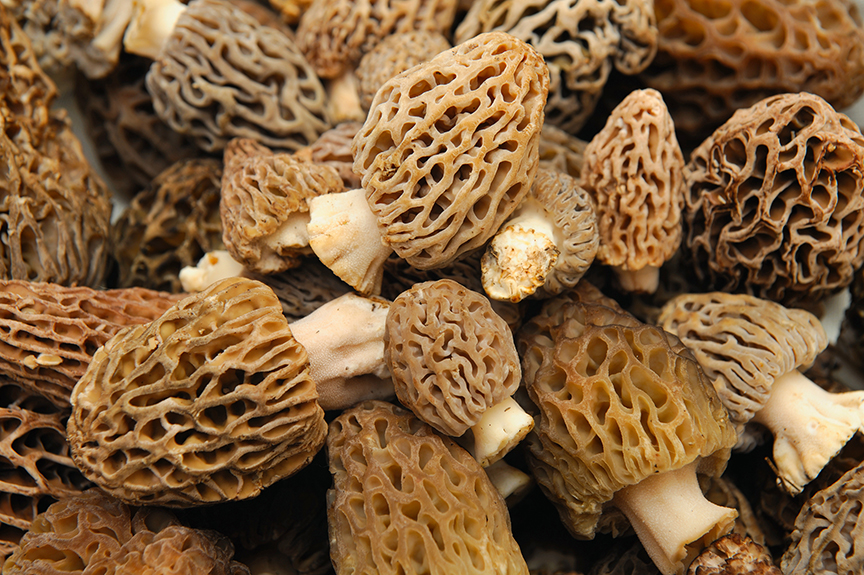BY RACHELLE SCHRUTE
Few things get foragers excited like morel mushroom season. Few mushrooms get culinary mycophiles more giddy, and for good reason. Morels are delicious. Because this nearly-impossible-to-grow mushroom isn’t available at your local market, it makes the allure of the morel even more enticing.
As a lay mycologist myself, I get absolutely elated when the leaves start to bud on the cottonwood trees. It’s the sign that spring is here. For me, it’s the sign to head for the hills and start giving in to my fungi-gathering habit.
I’ve compiled some info, tips, and tricks, to get you into the field foraging your very own culinary delights.
DISCLAIMER: Foraging edible plants and fungi can be a dangerous endeavor. Before you consume any foraged food, be sure you have correctly identified it. If you aren’t sure, don’t eat it. You can likely find experts in your area to help you correctly identify your find. Mistakes can cost you your life.
What’s the hype with morels?
Morel mushrooms are one of the most sought-after varieties in the world. Depending on your location and the time of year, they can demand up to $50 per pound. The reason? They are absolutely delicious and incredibly difficult to cultivate. This means if you want to get your hands on the culinary delight of morels, you’re either going to have to fork over some serious cash or lace up your hiking boots.
A culinary marvel
Morel mushrooms have an almost meaty texture, making them a wonderful meat substitute in cooking. Unlike other mushrooms, morels do not have the slimy texture often associated with edible fungi. The flavor of the morel itself is almost nutty but light and not overpowering.
Morels are what I like to refer to as a gateway mushroom for people not partial to the flavor or texture of mushrooms. They can turn anti-mushroom folks into mycophiles in short order.
Types of morel mushrooms
Identifying morels
NOT morels
False morel red flags
- Not completely hollow, fleshy interior
- Wrinkled, brain-like cap, not pitted
- Cap disconnected from stem or only connected at the top of the stem
- More red, purple, brown colored
- Irregular, “smooshed” shape
Morel identification

Morel mushroom identification, black morel (left), cross-section (center), yellow morel (right). Photos: Rachelle Schrute, mushroom-appreciation.com
Morel green flags
- Hollow-bodied from stem to cap
- Deeply pitted cap, not wrinkled
- Fully connected stem and cap (in most cases)
- Colors ranging from black, gray, tan, yellow, and whitish
- Pointed, peaked growth
How to find morels
Tools needed
When to look
Where to find morels
Moisture
Trees
Fire
Preparing morels
This story first appeared on GearJunkie.














